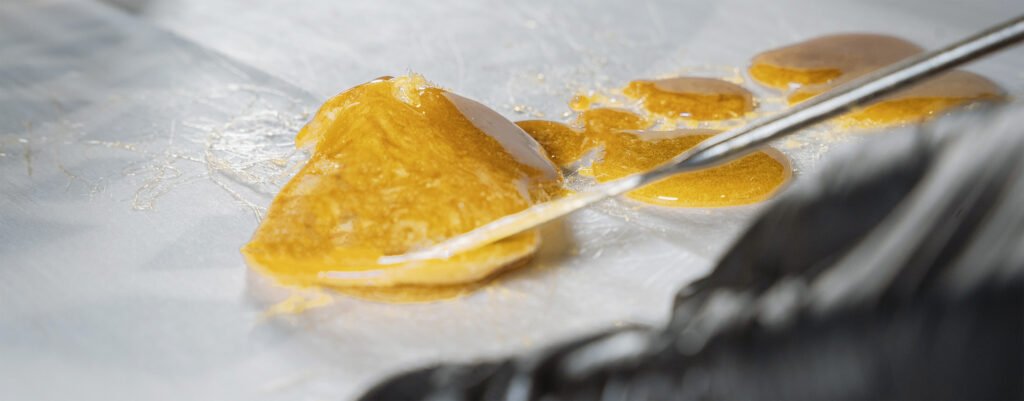Introduction
In the world of cannabis concentrates, fresh press rosin stands out for its purity, potency, and flavor. Unlike other extraction methods that use solvents, rosin pressing is a solventless technique that utilizes heat and pressure to extract essential oils from cannabis flowers or hash. This method preserves the natural terpenes and cannabinoids, offering a cleaner and more flavorful experience for consumers.
Whether you’re a seasoned enthusiast or a newcomer, understanding the process of pressing fresh rosin can enhance your appreciation and enjoyment of cannabis concentrates.
What Is Fresh Press Rosin?
Fresh press rosin is a cannabis concentrate produced without the use of solvents. The process involves applying heat and pressure to cannabis flowers or hash to extract the essential oils, resulting in a potent and flavorful concentrate. The key advantage of rosin pressing is its solventless nature, which eliminates the need for chemical solvents like butane or CO₂, ensuring a cleaner product.
The Rosin Pressing Process
-
Selecting the Material
The quality of the starting material significantly impacts the quality of the final product. For flower rosin, choose cannabis buds that are rich in trichomes, as these contain the cannabinoids and terpenes responsible for the desired effects and flavors. For hash rosin, ensure the hash is well-made, with a high percentage of trichomes and minimal plant material.
-
Preparing the Material
-
Flower Rosin: Break up the cannabis buds into small pieces to increase surface area.
-
Hash Rosin: Place the hash into a rosin filter bag, which helps in separating the rosin from unwanted plant material during the pressing process.
-
-
Setting Up the Rosin Press
-
Temperature: Set the press to a temperature between 180°F and 220°F (82°C to 104°C). Lower temperatures preserve more terpenes, while higher temperatures may yield more rosin but can degrade some cannabinoids.
-
Pressure: Apply moderate pressure to begin with, gradually increasing as needed. Too much pressure can cause the rosin to become too runny, while too little may result in low yields.
-
-
Pressing the Material
Place the prepared material between two sheets of parchment paper and position it in the rosin press. Apply heat and pressure for a duration of 60 to 90 seconds. The exact time may vary depending on the material and desired outcome.
-
Collecting the Rosin
After pressing, carefully remove the parchment paper and collect the rosin. Use a dab tool to scrape the rosin from the paper. For flower rosin, the yield is typically lower but offers a more flavorful concentrate. Hash rosin often yields higher quantities and can be more potent.
-
Post-Processing
-
Cooling: Allow the rosin to cool and solidify. This makes it easier to handle and store.
-
Storage: Store the rosin in an airtight container in a cool, dark place to preserve its potency and flavor.
-
Types of Rosin
-
Flower Rosin: Extracted directly from cannabis flowers, this type of rosin retains a full spectrum of cannabinoids and terpenes, offering a rich and flavorful experience.
-
Hash Rosin: Made from hash, which is a concentrated form of cannabis trichomes, hash rosin is typically more potent and can have a smoother texture.
-
Live Rosin: Produced from fresh-frozen cannabis flowers, live rosin captures the full terpene profile of the plant, resulting in a more aromatic and flavorful concentrate.
Benefits of Fresh Press Rosin
-
Purity: Being solventless, rosin is free from residual chemicals, offering a cleaner concentrate.
-
Flavor: The preservation of terpenes leads to a more flavorful experience.
-
Potency: Rosin retains a high concentration of cannabinoids, providing potent effects.
-
Versatility: Rosin can be consumed in various ways, including dabbing, vaping, or adding to edibles.
Challenges in Rosin Pressing
-
Material Quality: The quality of the starting material directly affects the quality of the rosin.
-
Equipment: High-quality rosin presses can be expensive, and achieving optimal results requires practice and precision.
-
Yield: The yield can vary based on the material used and the pressing conditions.
Read More: How to Make1M.com: Your Complete Guide to Financial Success
Conclusion
Fresh press rosin offers a pure, potent, and flavorful alternative to traditional cannabis concentrates. By understanding the pressing process and the factors that influence the quality of the final product, enthusiasts can appreciate the artistry and science behind rosin production.
Whether you’re pressing at home or purchasing from a dispensary, fresh press rosin provides a premium cannabis experience.
FAQs
-
Can I press fresh cannabis buds without freezing them?
While it’s possible to press fresh buds, freezing them before pressing can help preserve terpenes and improve the quality of the rosin.
-
What is the best temperature for pressing rosin?
A temperature range of 180°F to 220°F is ideal. Lower temperatures preserve more terpenes, while higher temperatures may yield more rosin but can degrade some cannabinoids.
-
How do I store rosin to maintain its quality?
Store rosin in an airtight container in a cool, dark place. Avoid exposure to heat and light to preserve its potency and flavor.
-
Can I use a hair straightener to press rosin?
While a hair straightener can be used as a makeshift press, dedicated rosin presses offer more consistent heat and pressure, leading to better results.
-
Is rosin pressing legal?
The legality of rosin pressing varies by jurisdiction. Always check local laws and regulations before engaging in rosin pressing activities.










